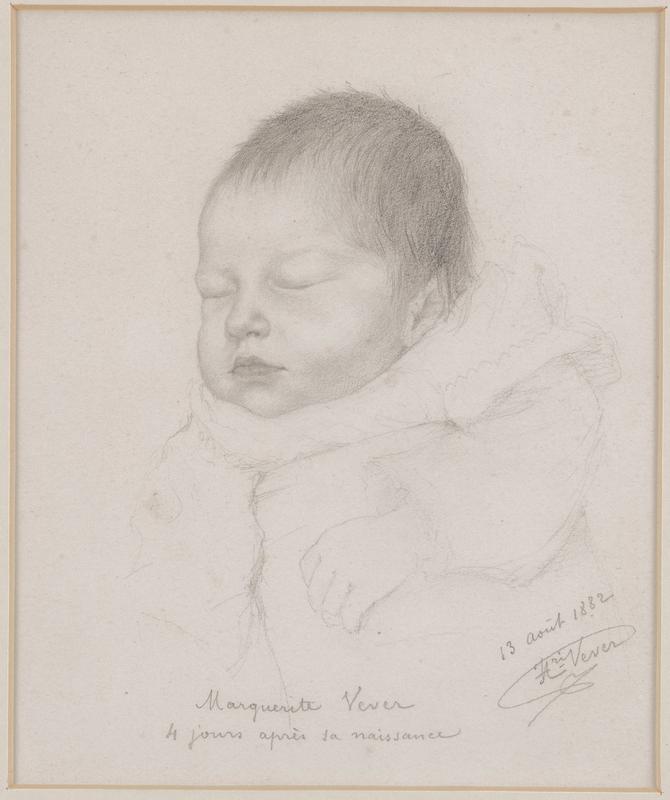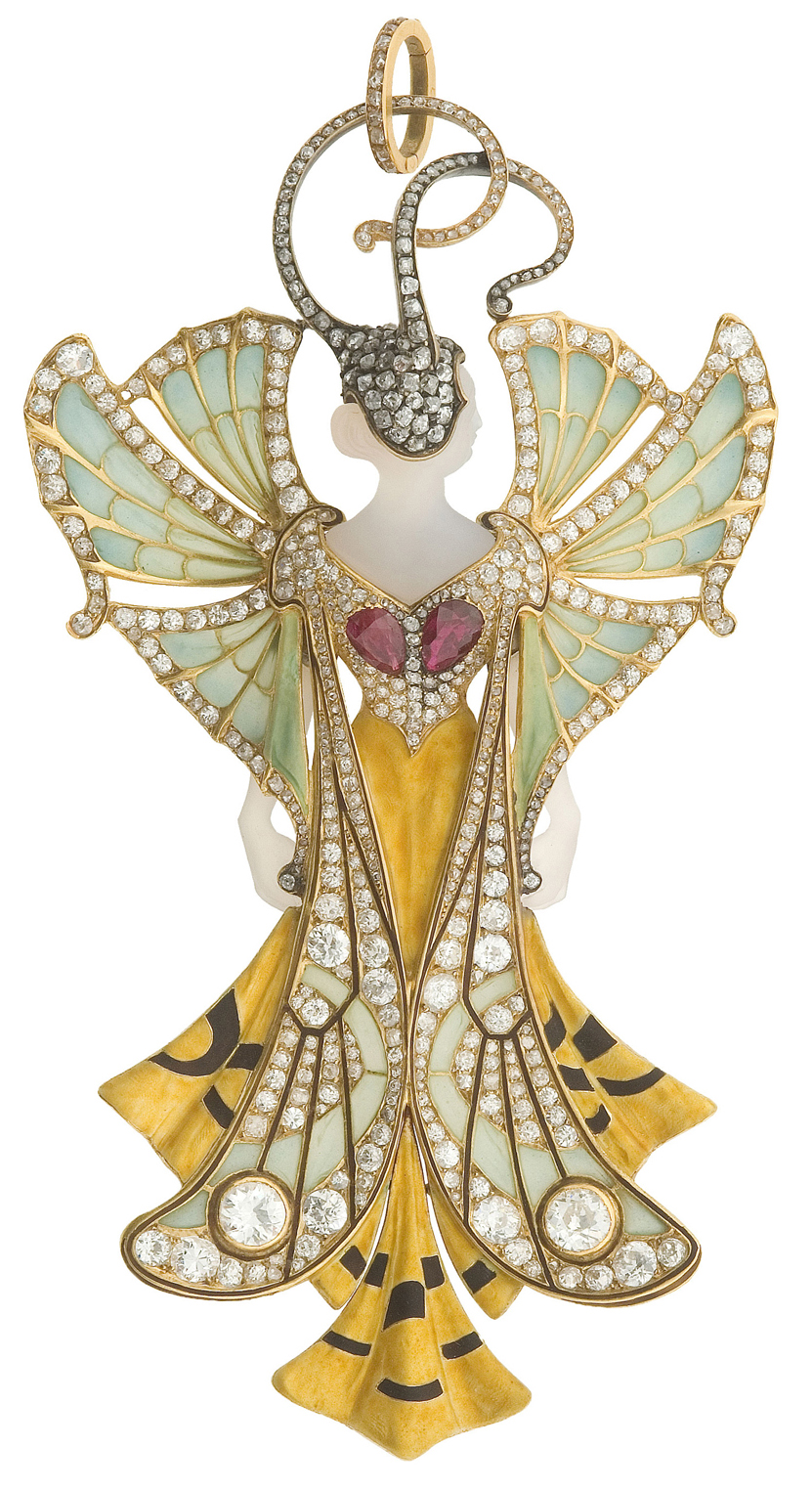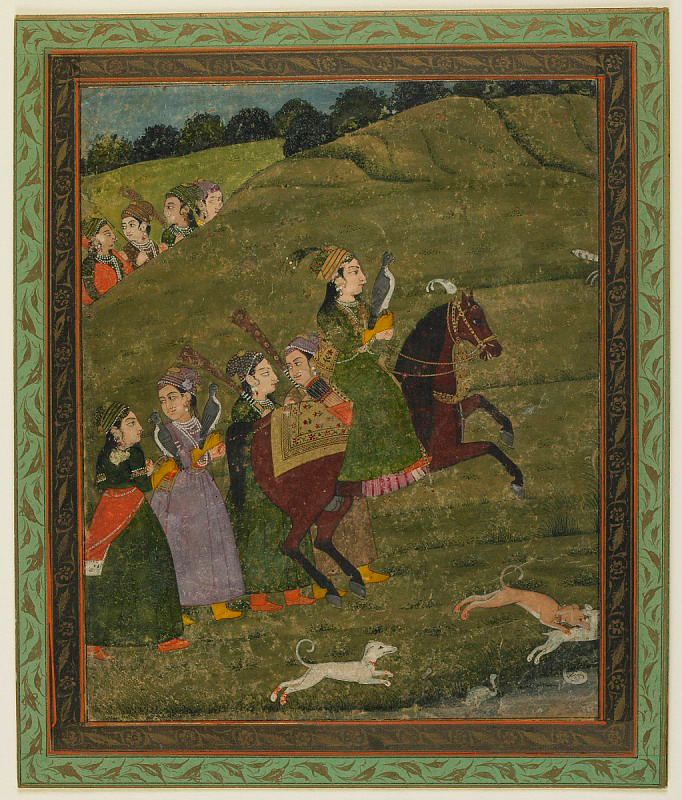
183. Henri Vever, Marguerite Vever
| Artist | Henri Vever, French, Metz 1854–Noyers, Eure 1942 |
| Title, Date | Marguerite Vever, 1882 |
| Medium | Pencil on light beige paper |
| Dimensions | 9 × 7 1/2 in. (22.9 × 19.1 cm) |
| Inscriptions + Marks | Lower middle: Marguerite Vever / 4 jours après sa naissance | Lower right: 13 Août 1882 / HriVever |
| Provenance | Paris flea market until 1970s; to Weisberg; Yvonne and Gabriel Weisberg, Minneapolis |
| Credit Line | Promised gift of Gabriel P. and Yvonne M.L. Weisberg, Minneapolis |

Henri Vever was the son and grandson of goldsmiths, and was himself one of the foremost goldsmiths and jewelers in Paris. Yet, in some circles he is remembered more as a collector and a scholar. He grew up in Metz, France, but the family left for Paris in 1871, when France ceded his hometown to Germany under the terms of the Treaty of Frankfurt, which marked the end of the Franco-Prussian War. In Paris his father bought a jewelry studio, which became known as Maison Vever. Henri immediately began apprenticeships at well-established jewelry workshops and attended the École des Arts Décoratifs. After two years, he was accepted to the École des Beaux-Arts, where he studied with Jean-Léon Gérôme. In 1881 his father retired, and Henri and his brother took over the business (fig. 1).
That same year, Henri married Jeanne Monthiers, whose family had a chateau in Lower Normandy that had belonged to Napoleon’s finance minister. Marguerite was born the following August.
The young father was clearly smitten with his baby daughter. Four days after her arrival, he deployed his finest artistic training on this tender, delicate study of the sleeping newborn. He carefully modeled her head, and even the parts drawn in spare outline, such as Marguerite’s hand, convey the infant’s vulnerability. Marguerite grew up to have a family of her own and died in 1939, before both of her parents.

In 1885 Henri Vever began collecting art. His interests proved wide-ranging. He collected European paintings and prints, Japanese prints, Islamic art, and more (fig. 2). In 1892 he became a regular participant in art dealer Siegfried Bing’s monthly dinners (dîners de japonisants) and joined Bing’s Society of Friends of Japanese Art. In 1900 he joined the new Société Franco-Japonaise. Vever was probably the first European to collect Japanese woodblock prints extensively and systematically.1 He accumulated thousands, and his collection provided the main source material for the pioneering scholars studying these sheets of paper that reshaped European art. He donated nearly forty Japanese woodcuts to the Musée du Louvre in 1894. World War I may have been hard on his business in luxury goods, for he sold nearly 8,000 of his Japanese prints in the 1920s. Today they form the core of the woodcut collection at the Tokyo National Museum. Vever retained some of his favorites and built a second collection, which eventually appeared in a series of auctions at Sotheby’s, London, in the 1970s.2 The Weisberg drawing turned up at a Paris flea market around the same time that Vever’s descendants seem to have been dispersing the print collection.
TER
Notes
See Willa Z. Silverman, ed., Henri Vever: Champion de l’Art Nouveau (Malakoff, France: Armand Colin, 2018); https://sirismm.si.edu/siris/vever.html ↩︎
March 26, 1974; March 26, 1975; March 24, 1977; and October 30, 1997. ↩︎